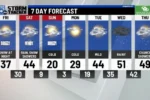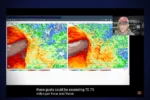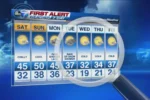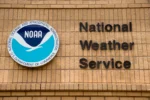Hey there, Texas friends! Big changes are coming in the weather, and we need to be ready! Governor Greg Abbott has announced that our state is calling in emergency helpers because of storms and wildfires coming this weekend and next week. In East Texas, we might see strong winds, hail, and even tornadoes, while in West Texas, firefighters are gearing up for dangerous wildfires. Plus, an icy cold front is on its way, bringing freezing temperatures. Let’s dive into what this means for us and how our brave emergency teams are preparing to keep everyone safe!
| Category | Details |
|---|---|
| Severe Weather Forecast | Damaging winds, possible tornadoes, large hail, and heavy rainfall with flash flooding risks in East Texas. |
| Wildfire Threat | Critical wildfire dangers in West Texas due to gusty winds and low humidity. |
| Cold Weather Outlook | An arctic cold front bringing sub-freezing temperatures and potential wintry weather from mid to late next week. |
| Activated Resources | 1. Texas A&M Engineering Extension Service: Swiftwater Rescue Boat Squads for flood rescues. 2. Texas A&M Forest Service: Firefighters, fire engines, bulldozers, aerial firefighting support, and helicopters for wildfire response. 3. Texas Department of State Health Services: Emergency medical resources including wildfire support packages. |
Severe Weather Risks in Texas
Texas is bracing for severe weather conditions, particularly in East Texas, where residents may face damaging winds, large hail, and even tornadoes. These severe storms can lead to flash flooding, which poses significant risks to safety and property. It’s important for families to stay informed and prepared as forecasts predict heavy rainfall that could overwhelm local drainage systems. By understanding these risks, communities can take proactive measures to protect themselves and their homes.
In light of the severe weather forecast, Governor Greg Abbott has activated state emergency response resources. This activation includes swiftwater rescue teams ready to assist in case of flooding emergencies. Local authorities are working diligently to ensure that emergency services are prepared to respond quickly to any incidents that may arise. Staying updated through official channels and having an emergency plan in place can make a big difference during extreme weather events.
Wildfire Concerns in West Texas
West Texas is currently facing critical dangers from wildfires due to dry conditions, low humidity, and strong winds. These factors create an environment where fires can start easily and spread rapidly. Residents in these areas should be vigilant and take precautions to prevent accidental fires, such as ensuring that outdoor equipment is turned off and any flammable materials are stored safely. Being aware of the situation can help keep families and homes safe from potential wildfire threats.
In response to the wildfire risks, the Texas A&M Forest Service is mobilizing resources, including firefighters and aerial support. This proactive approach aims to contain any fires before they escalate. Community members are encouraged to follow local news for updates and fire safety tips. Understanding how to respond during a wildfire emergency can save lives and property, making it crucial for everyone to be informed and prepared.
Preparing for Cold Weather and Winter Storms
As an arctic cold front approaches Texas, residents should prepare for sub-freezing temperatures and possible wintry weather. This cold snap could lead to icy roads and hazardous conditions, so it’s essential to have a winter safety plan in place. Families should ensure they have warm clothing, blankets, and emergency supplies, such as food and water, on hand. Knowing how to stay warm and safe during extreme cold can help prevent emergencies.
In anticipation of winter storms, local authorities are also preparing resources to assist those affected. This includes emergency medical services ready to respond to cold-related incidents. It’s important for families to stay informed about weather updates and follow safety guidelines during this time. Keeping an eye on the forecast and being ready for sudden weather changes can make all the difference in staying safe and comfortable.
Understanding Severe Weather Risks in Texas
Texas is well-known for its unpredictable weather patterns, and the current forecast is no exception. As Governor Greg Abbott prepares the state for potential severe weather, residents in East Texas should remain vigilant. The threat of damaging winds, possible tornadoes, and large hail means that communities need to stay informed and prepared. Flash flooding may also occur due to heavy rainfall, which can quickly overwhelm local drainage systems.
To minimize risks, it’s essential for residents to have a plan in place. This includes staying indoors during storms, having an emergency kit ready, and keeping abreast of weather updates via trusted sources. Local authorities are emphasizing the importance of community readiness as they face the looming threats, reminding families to practice safety drills and have clear communication lines established.
Wildfire Preparedness: Protecting West Texas
As East Texas braces for severe storms, West Texas faces a different kind of threat: wildfires. The combination of gusty winds and low humidity creates a critical fire danger that can escalate quickly. With dry conditions prevalent, it’s vital for residents to understand how to protect their homes and properties from potential wildfires.
Preparedness can significantly mitigate risks associated with wildfires. Homeowners should create defensible space by clearing flammable materials, maintaining landscaping, and ensuring that firebreaks are in place. Additionally, having an evacuation plan and a go-bag ready can make a crucial difference should a fire threaten your area.
The Role of Emergency Management Services in Texas
In response to the escalating weather threats, the Texas Division of Emergency Management (TDEM) has activated crucial resources to assist communities. These include the Texas A&M Engineering Extension Service, which deploys Swiftwater Rescue Boat Squads for flood rescues. Their expertise is invaluable in protecting lives and property during severe weather events.
Furthermore, the Texas A&M Forest Service is mobilizing firefighters, fire engines, and aerial support to combat potential wildfires. These emergency services are essential for swift response and mitigation efforts, ensuring that trained personnel and equipment are ready to act when disaster strikes. This coordinated approach underscores the importance of state resources in safeguarding Texas residents.
The Impact of Cold Weather on Texas Communities
As the weather shifts, Texans must also prepare for the impending arctic cold front expected to bring sub-freezing temperatures. This sudden drop can lead to a range of challenges, including icy roads, power outages, and increased demand for heating resources. Awareness of these potential impacts is crucial for community safety and well-being.
Residents are encouraged to prepare their homes for the cold by insulating pipes, checking heating systems, and stocking up on essential supplies. Awareness campaigns and local resources can help ensure that vulnerable populations, such as the elderly or those with limited mobility, receive the assistance they need during this frigid weather.
Frequently Asked Questions
What is severe weather and what can it do?
**Severe weather** includes dangerous storms like tornadoes, strong winds, and heavy rain. It can cause **damaging effects** like flooding, fallen trees, and power outages, making it important to stay safe and prepared.
Why are wildfires a problem in West Texas?
**Wildfires** are a big danger in West Texas because of **strong winds** and **low humidity**. These conditions can make it easier for fires to start and spread quickly, threatening homes and wildlife.
What should I do if there is a tornado warning?
If there is a **tornado warning**, find a safe place indoors like a basement or small room. Stay away from windows and listen to weather updates on a radio or phone to stay informed.
How can the Texas Division of Emergency Management help during disasters?
The **Texas Division of Emergency Management** has special teams and resources ready to help during disasters. They can send out **rescue boats** for floods and **firefighters** for wildfires to keep people safe.
What happens when an arctic cold front arrives?
When an **arctic cold front** arrives, it brings very **cold temperatures** and sometimes **snow or ice**. This can affect travel and make it important to dress warmly and stay indoors if possible.
How do I prepare for severe weather events?
To prepare for severe weather, you should:
– Create an emergency kit with food and water.
– Have a plan for where to go if you need to evacuate.
– Stay updated with the latest weather news.
What is flash flooding and why is it dangerous?
**Flash flooding** happens when heavy rain causes rivers and streams to rise quickly. It is dangerous because it can happen suddenly, making it hard to escape and leading to **strong currents** that can sweep away people and vehicles.
Summary
The content discusses Governor Greg Abbott’s activation of state emergency resources in Texas due to imminent severe weather and wildfire threats. It highlights a severe weather forecast for East Texas, predicting damaging winds, potential tornadoes, large hail, and heavy rainfall that could lead to flash flooding. In West Texas, critical wildfire risks are anticipated due to gusty winds and low humidity. Additionally, an arctic cold front is expected to bring freezing temperatures and possible winter weather next week. The Texas Division of Emergency Management has mobilized various resources, including rescue teams and firefighting support, to address these challenges.







